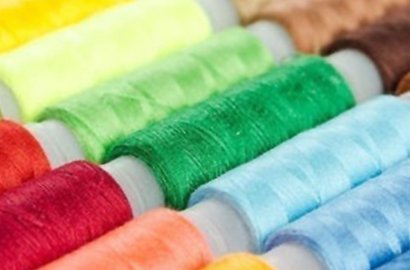용해

기술 섬유는 천연 또는 합성 섬유이든 간에, 우선적으로 방사도프를 만들어야 합니다. 점성을 지닌 균일하고 가스가 제거된 방사도프는 여러 단계를 거쳐 생산됩니다. 용해 단계를 필요로 하는 모든 섬유에 대해 리스트 니더반응기(LIST KneaderReactor) 기술은 고품질의 방사도프를 대용량으로 생산할 수 있어 최소한의 비용으로 높은 섬유 품질을 제공합니다. 니더반응기의 독특한 공정 특성은 집중적인 혼합 및 반죽, 일정한 표면재생 및 가변적이고 조절 가능한 체류시간을 제공합니다. 하나의 단일 라인에서 대규모 산업용 생산규모로 스케일 업하는것은 리스트 기술의 많은 이점 중 하나입니다.
특이사항
- 효과적인 셀프 클리닝으로 인한 데드존, 제품 축적 및 분해산물의 최소화
- 최적의 반죽 및 믹싱으로 인한 우수한 균일화
- 저전단 공정
- 효과적인 열전달
- 고효율 표면 갱신
- 광범위한 프리(free)증기부피
- 광범위한 전열면적으로 인한 정밀하고 균일한 온도 컨트롤
- 연속 공정
- 점착성이 있거나 고점도의 제품처리 공정
- 잘록한 체류 시간 분포 (관형 흐름)
- 넓고 유연한 평균 체류 시간
- 시험/파일럿용 장비부터 공업규모까지 신뢰할 수 있는 스케일 업
사례
라이오셀
셀룰로오스와 첨가제는 연속적으로 리스트 니더반응기(LIST KneaderReactor)에 용해되어 최적의 혼합과 함께 열처리, 증발 및 가스 제거가 가능합니다. 그 결과 매우 균일하고 거품과 가스가 없는 유리 투명한 옅은 노란색 방사 솔루션을 제조할 수 있습니다. 공정에 따라 용매는 N-메틸모르폴린-N-산화물 (NMMNO), 다양한 이온성 액체, 산 또는 가성일 수 있습니다.
아라미드
아라미드 섬유는 일반적으로 진한 황산에서 폴리(p-페닐렌 테레프탈아미드) (PPTA) 중합체로 만들어진 점성 용액으로부터 습식 방사됩니다. 발열 용해 공정중에 방출되는 열에너지는 중합체를 용융 및 용해시키는데 도움을 줍니다. 고분자 용액은 점성이 있는 비뉴턴유체 입니다. 고품질의 아라미드 섬유를 만들기 위한 요구 조건은 제어된 높은 고분자 농도로 균질하고 가스가 제거된 용액을 만드는 것 입니다.
다운로드
| 제목 | 설명 | 언어 | 년도 | 다운로드 |
|---|---|---|---|---|
| Perfect dissolving technology for very good fiber quality | For decades, conventional polymerisation has been the norm in the production of elastomers. The time and cost involved in removing and treating solvents in the final stages of production were acceptable. Yet as pressure builds on manufacturers to reduce operating costs, there is greater urgency to develop processes that can help streamline costs and production techniques. One such effort has yielded extremely promising results. | English | 2015 | |
| Direkt in der Polymerlösung entgasen | Der zunehmende Kostendruck macht keinen Halt vor der Produktion von Elastomeren. Gefragt sind intensivierte Prozesse, die unnötige Verfahrensschritte ersparen und sowohl Zeitaufwand wie auch Kosten senken. Nun liefert ein innovativer Ansatz aus der Schweiz, die sogenannte Direct Devolatilization (direkte Entgasung) von Polymerlösungen, vielversprechende Ergebnisse. | English | 2015 | |
| Perfect fiber quality from perfect dissolving technology | Fiber, filament, flies and foil are the final products of a complex process of mixing, dissolving, spinning, washing and drying of raw material. Many specialists believe that the spinning part is the only relevant processing step for the final fiber quality. This belief falls short, as the fiber quality also depends on the dissolving step before the spinning step. | English | 2014 | |
| Concentrated dissolving for homogeneous spinning dope | In conventional spinning dope production, capacity is typically a function of the maximum processing viscosity the spinning plant can handle. Often the prior dissolving process step is limited by this fact. In a typical wet spinning operation, dope viscosity ranges from 500-2500 Pa ·s (zero shear viscosity at 95 °C) can be handled. For processors looking to meet rising demand with world-sca le plants, the limitations imposed by high viscosity dope sol utions are challenging and costly. List AG, Arisdorf/Switzerland, have now adapted the company’s high viscosity processing technology in order to meet the difficult processing challenges of today’s high-production fiber lines. The technology can easily handle 20,000-200,000 Pa·s (zero shear viscosity). | English | 2013 | |
| Improved Lyocell dissolving system | The Iyo cell fiber process is developed to transform cellulose to a man-made cotton-like fiber. The lyocell process includes a number of processing steps. The dissolving step is the most important one. It represents the heart of the lyocell technology. Kneaders developed by List AG, Arisdorf/Switzerland, are successfully applied for the continuous dissolving step whereby raw materials of different origin can be processed and transferred into a spinabie dope. | English | 2006 | |
| Process flexibility and process safety | As world consumption of textile fibers expands with the rapid growth of Asia and other developing countries, sources of fibers other than cotton and rayon must be developed and brought to market to meet demand. Cellulose fibers (Lyocell fibers) can meet these expanding needs because of the specific qualities and characteristics of the fiber, as well as the vast availability of the raw materials. | English | 2004 | |
| Innovative Weiterentwicklung der Lyocell Tehnologie | Der LYOCELL-Prozess ist eine moderne umweltfreundliche Möglichkeit zur Umwandlung von verschiedensten cellulosischen Rohmaterialien der Natur in Fasern, Filamente und Folien zur weiteren Verarbeitung in der Textilindustrie, der Verpackungsindustrie oder als Strukturbildner in technischen Anwendungen. Die Nassreißfestigkeit der LYOCELL-Faser übertrifft sogar die der Bauwollfaser. | Deutsch | 2004 | |
| Optimization of cellulose dissolution stage | LIST further optimized the cellulose dissolution technology, which was introduced in 1992. This succeeded the production of excellent spinning solution qualities, produced from a variety of low cost raw materials. The technology fulfils the current high safety standards. | English | 2001 | |
| Continous dissolution process of cellulose in NMMO | A new dissolution process for cellulose spinning solution was developed. As Basis for the new process served the classic cellulosic fiber production process. In the last 30 years or so the conventional viscose process became environmentally critical. Evaluated with regard to its environmental viability it was found to create considerable water and air pollution. This conclusion ignited the research and development of new technologies with less environmental impact. | English | 1999 |
